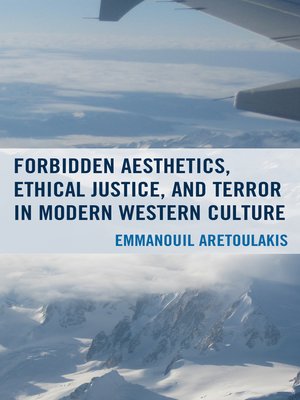Forbidden Aesthetics, Ethical Justice, and Terror in Modern Western Culture
ebook
By Emmanouil Aretoulakis

Sign up to save your library
With an OverDrive account, you can save your favorite libraries for at-a-glance information about availability. Find out more about OverDrive accounts.
Find this title in Libby, the library reading app by OverDrive.



Search for a digital library with this title
Title found at these libraries:
| Library Name | Distance |
|---|---|
| Loading... |
Forbidden Aesthetics, Ethical Justice, and Terror in Modern Western Culture explores the potential links between terror and aesthetics in modern Western society, specifically the affinity between terrorism and the possibility of an aesthetic appreciation of terrorist phenomena or events. But can we actually have an aesthetic appreciation of terror or terrorism? And if we can, is it ethical or legitimate?
Emmanouil Aretoulakis proposes that Western spectators and subjects from the eighteenth century onwards have always felt, unconsciously or not, a certain kind of fascination or even exhilaration before scenes of tragedy and natural or manmade disaster. Owing to their immorality, such "forbidden" feelings go unacknowledged. It would definitely be callous as well as politically incorrect to acknowledge the existence of aesthetics in witnessing or representing human misery. Still, as Aretoulakis insists, our aesthetic faculties or even our appreciation of the beautiful are already inherent in how we view, appraise, and pass judgment upon phenomena of terrorism and disaster. Paradoxically, such a "forbidden aesthetics" is ethical despite its utter immorality.
Emmanouil Aretoulakis proposes that Western spectators and subjects from the eighteenth century onwards have always felt, unconsciously or not, a certain kind of fascination or even exhilaration before scenes of tragedy and natural or manmade disaster. Owing to their immorality, such "forbidden" feelings go unacknowledged. It would definitely be callous as well as politically incorrect to acknowledge the existence of aesthetics in witnessing or representing human misery. Still, as Aretoulakis insists, our aesthetic faculties or even our appreciation of the beautiful are already inherent in how we view, appraise, and pass judgment upon phenomena of terrorism and disaster. Paradoxically, such a "forbidden aesthetics" is ethical despite its utter immorality.







